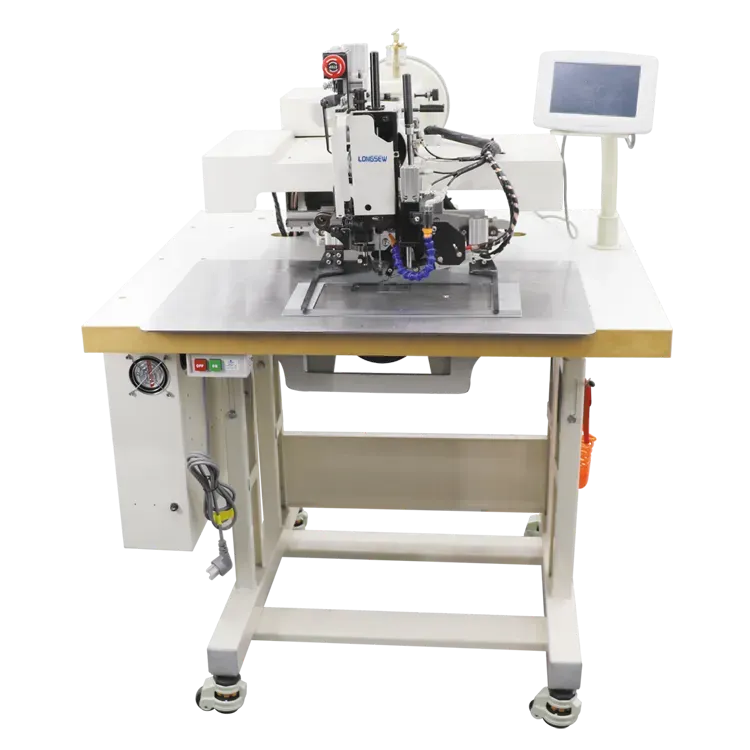Exploring the Versatility and Uses of Chain Stitch Machines in Textile Production Techniques
Understanding Chain Stitch Machines A Key Player in the Textile Industry
In the world of textile manufacturing, efficiency and precision are paramount. Among the various types of sewing machines, the chain stitch machine stands out as a versatile and essential tool. This article explores the key features, applications, and benefits of chain stitch machines in the textile industry, highlighting their importance in modern garment production.
What is a Chain Stitch Machine?
A chain stitch machine is a type of sewing machine that creates a stitch pattern using a series of interlocking loops, rather than a simple straight stitch. This is achieved by using two threads the upper thread and a looper thread, which intertwine to create a durable and elastic stitch. The most commonly recognized form of chain stitching is the use of a single needle and a looper, but there are variations that involve multiple needles and loopers for more complex patterns.
Key Features of Chain Stitch Machines
1. Speed and Efficiency Chain stitch machines are known for their rapid sewing capabilities. They can operate at high speeds, allowing manufacturers to produce garments quickly, which is essential in meeting today’s fast-paced market demands.
2. Versatility These machines can be used for various applications, from sewing light-weight fabrics like silk to heavier materials such as denim. This versatility makes them popular in various sectors, including fashion, home textiles, and industrial fabrics.
3. Elasticity and Durability The chain stitch allows for a certain degree of stretch, making it ideal for garments that require flexibility, such as activewear and knitwear. Additionally, chain stitching is known for its strength, providing durability that can withstand the rigors of wear and tear.
4. Ease of Use Many chain stitch machines come with user-friendly features. With adjustable settings for stitch length and tension, operators can customize their sewing to meet specific requirements of each fabric type or design.
chain stitch machine

Applications of Chain Stitch Machines
Chain stitch machines are utilized in a multitude of applications in the textile and garment industries. They are predominantly used for
- Seaming Joining two pieces of fabric together is a primary function of chain stitch machines, especially in the production of garments and home textiles. - Finishing They can also be employed for hemming and finishing edges, providing a clean and professional look to various products. - Embellishments Chain stitching can be used for decorative purposes, adding a unique flair to garments through various stitch patterns and colors. - Quilting In quilting, the flexibility of the chain stitch allows for intricate designs while keeping layers of fabric securely joined.
The Benefits of Utilizing Chain Stitch Machines
Utilizing chain stitch machines comes with numerous advantages
- Cost-Effectiveness Their ability to sew quickly helps reduce labor costs and conserve time, contributing to a more cost-effective manufacturing process. - Quality Output The precise nature of chain stitching results in high-quality seams that are both aesthetically pleasing and functional, ensuring customer satisfaction. - Adaptable Production With the rise of fast fashion, the adaptable nature of chain stitch machines allows manufacturers to respond swiftly to changing trends and consumer demands.
Conclusion
In conclusion, chain stitch machines play a critical role in the textile industry, offering speed, versatility, and quality that are essential for modern garment production. As technology continues to evolve, the capabilities of these machines will likely expand even further, solidifying their importance in the world of textiles. As manufacturers seek ways to enhance efficiency and meet the demands of consumers, embracing chain stitch machines is a step towards achieving excellence in production.
-
Industrial Cylinder Arm Sewing Machine: Revolutionizing Heavy-Duty SewingNewsJul.28,2025
-
Cylinder Arm Sewing Machine: Perfect for Special Sewing ApplicationsNewsJul.28,2025
-
Cylinder Bed Sewing Machine: Essential for Sewing Complex MaterialsNewsJul.28,2025
-
Heavy Duty Sewing Machine: The Essential Tool for Industrial ApplicationsNewsJul.28,2025
-
Computerized Pattern Sewing Machine: Revolutionizing Precision StitchingNewsJul.28,2025
-
Heavy Duty Industrial Sewing Machine: Power Meets PrecisionNewsJul.28,2025
-
Leather Sewing Machine: The Industrial Standard for Tough MaterialsNewsJul.18,2025





























